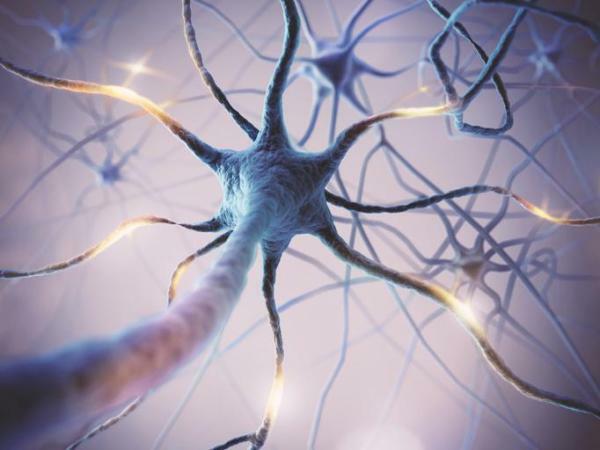For Manuel Gonzalez Oscoy. March 1, 2018

Currently, multimedia technology allows us to combine two basic tools within the new educational models: the computer and audiovisual media, that is to say the use of sound and the image is fixed or with movement. Through multimedia we can facilitate the student's acquisition of new concepts by presenting both images as animated models of various processes and allow you to interactively carry your own learning.
In this PsychologyOnline article, we will talk about the Multimedia Technology for the Teaching of Neuropsychology.
Now, these two tools would be incomplete within the teaching process without a theoretical model of instruction that guides its application, hence, the educational foundation used, is itself the first to apply technology to education, that is, the programmed instruction developed by B. F. Skinner through the teaching machine.
The teaching machine was created by Skinner for his daughter Deborah, based on the well-known skinner box
In programmed teaching the student receives a series of graduated stimuli and is obliged to actively respond to such situations. If your answers have been correct (and it is the task of the program to give and arrange the stimuli so that the student responds ordinarily with correction) the student receives reinforcements according to the answers given.
Among the most important contributions of teaching machines, Skinner himself writes that we can count on:
- immediate corroboration of the correct answer
- the probability that the mere handling of the device (in this case a computer) will be reinforcing enough to keep the current student attentive to the task for a long time each day
- a single teacher can monitor a large number of students working at the same time
- each of the students will progress at their own pace, according to her ability, trying to solve as many problems or answer as many questions as possible in the duration of the session
- in case of interruption of the task, the process can be resumed at the same point in which it was interrupted.
The device makes it possible to calculated presentation of arranged materials in such a way that the approach and the solution of a reagent depend on the answer given to the previous one; errors made can also be recorded.
With the use of the computer, and following the educational model of programmed teaching, an explanatory text of the theoretical content can be presented synchronously, as well as the images that help your understanding. At the end of the presentation of the text, the student responds to a series of questions of different modalities such as writing your answer or pointing in a diagram among other possibilities of interaction of the user with the computer
This series of activities constitutes in itself a immediate evaluation and feedback about the newly acquired information, since each correct answer allows you to advance to the next item, having a pre-established time limit to answer each one; In case of not answering correctly within the pre-established period, the student receives an error message and goes on to the next item.
In our case, the programs have been organized into two basic modules: information modules Y quiz modules or activities.
In the information modules a brief explanatory text of the material is presented on each screen accompanied by an image; According to the above, the information is presented gradually between one screen and the next, always accompanied by a relevant image to the text, an image that has not only been digitized, but also edited to emphasize those points that are of interest to teach, and attenuate or eliminate irrelevant information. Although in general drawings and diagrams are used for their didactic clarity, this does not prevent the use, when it is advisable, of digitized images of real shots by photography or video. In this case, the use of sound is discouraged due to the space it consumes on the disc without its properties as a reinforcer justifying it. Also in quiz modules or activities The student is shown the same image that accompanied the explanatory text when he is asked to develop any of the following activities: write your answer, point in a diagram, select an answer option, place within an outline or establish relations.

The modules carried out so far include among others topics:
- Central Nervous System
- Peripheral nervous system
- Autonomic nervous system
- Autonomic nervous system. Sympathetic Division
- Autonomic nervous system. Parasympathetic Division
- Embryological development of the nervous system
- Brain lobes
- Brain sulci and fissures
- Cortical areas
- Diencephalon
- Thalamus
- Hypothalamus
- Neuron
Each of these modules were carried out with the program Authorware Professional ver. 3.0, which allows to generate executable programs under Windows environment. The minimum system requirements to work with them are the following: PC 386, 4 Mb RAM memory, VGA color monitor, a free hard disk space of 15 Mb and the Windows 3.1 program.
It is worth mentioning that these modules can be grouped and ordered according to the particular needs of a plan of studies to be followed, citing as an example unit 2 of the subject Biological Bases of Behavior (according to the program of the Div. Open University of the Fac. of Psychology of the U.N.A.M.): Brain hemispheres. Cortical Areas, which includes material of the modules: Cerebral lobes, cortical areas and cerebral sulci and fissures.
As an immediate application we can say that, within the Fac. of Psychology, the subjects of the Biological Bases of Behavior block (Biological Bases of Behavior, Anatomy and Physiology of the Nervous System, Neurophysiology Y Psychophysiology), present certain difficulties in understanding processes and memorizing the terms it implies.
Considering the above, a series of educational programs based on the programmed teaching model, seeking to support in particular the students of the Open University System (SUA) in the subjects of the Biological Bases of Behavior block. The project as a whole aims to automate the teaching-assessment process that covers the entire content of the subjects mentioned above, the generation of an individualized exam from a reagent bank, its immediate evaluation and the storage of the qualification acquired.
Considering that this material can be made available to the general public through an Internet page, it is not risky to speak of a "virtual classroom of neuropsychology".
This article is merely informative, in Psychology-Online we do not have the power to make a diagnosis or recommend a treatment. We invite you to go to a psychologist to treat your particular case.


